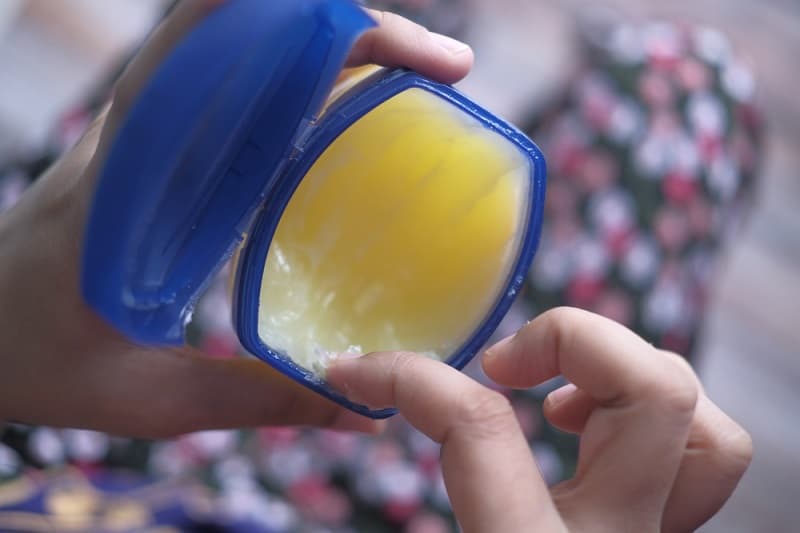Tattoo Ink and The Skin
As we mentioned, the ink is transferred into the skin via a tattoo needle, at a rather high speed. However, the vacuum that the needle creates isn’t enough to hold the ink alone.
First of all, the ink is placed in the skin layer called the dermis. Now, the outer skin layer is known as the epidermis. The needle goes through the epidermis, where it reaches the inner layer or the dermis. This is the perfect placement for the ink because, if it were placed in the epidermis, it would just leak out. Now, because the vacuum environment is created inside the skin, the ink will stay there and have a really hard time leaking out.
Now, we also have to mention that because of this, a tattoo looks less vibrant once it heals. There is basically a layer of epidermis over the tattoo that makes it look less fresh and vibrant, which is totally okay. But, we have to mention this, especially when we talk about the permanence of tattoos and the way they look as we get older.
Tattoos and The Body Reaction
Now, while you’re being tattooed, the tattoo needle basically creates small wounds inside the skin. The puncturing damages the skin, which is why a newly done tattoo is considered to be a fresh wound.
Now, your body doesn’t like damage. It then has to transfer all the attention to the area of damage so that it could promote its healing as fast as possible and prevent infection. Because of this, the body sends white blood cells or macrophages to the wounded area.
Macrophages (Greek for ‘big eater’) are a type of white blood cells that are responsible for removing dead cells and foreign bodies. Because the ink is considered a foreign body, the WBC attack the ink engulfs it, and processes it so that you can get rid of this potentially toxic foreign body, as the body interprets it.
RELATED BEST 10 ON AMAZON:
| IMAGE | TITLE | TRENDS | SEE MORE |
|---|
 | 6 Sheets FANRUI Cute Small Temporary Tattoos For Kids Men Women Watercolor Space Star Mountain Unicorn Children Cartoon Fa... | 6141 | MORE VIEW |
|---|
 | FANRUI 52 Sheets Creative Black Tiny Crown Infinity Triangle Fake Tattoos For Men Women Realistic Stars Letters Tattoos Fo... | 3990.4 | MORE VIEW |
|---|
 | Beefly Art Painting Temporary Kit Semi Permanent Freehand Gel(Natural Plants Based) Dozens Pcs Free Stencils, DIY Fake Fre... | 15611.7 | MORE VIEW |
|---|
 | TASROI 18 Sheets Black Inspired Quotes Temporary Tattoos For Women Kids Children Long Lasting Letter Alphabet Words Fake T... | 2508 | MORE VIEW |
|---|
 | 62 Sheets Temporary Tattoos Stickers, Fake Body Arm Chest Shoulder Tattoos for Men and Women, Halloween Temporary Tattoos ... | 20736 | MORE VIEW |
|---|
 | Konsait Temporary Tattoos for Adult Women Men Kids(30 Sheets), Waterproof Temporary Tattoo Fake Black Tiny Tattoos Body Ar... | 1664 | MORE VIEW |
|---|
 | Sponsored Ad - Shegazzi 62 Sheets Wolf Lion Skeleton Temporary Tattoos For Men Women Arm, 3D Realistic Tattoo Stickers For... | 4635 | MORE VIEW |
|---|
 | Rejaski 44 Sheets Various 3D Rose Flowers Butterfly Temporary Tattoos For Women, Watercolor Tatoos Kids Tattoos Temporary ... | 2164.5 | MORE VIEW |
|---|
 | 62 Sheets Temporary Tattoos Stickers, Fake Body Arm Chest Shoulder Tattoos for Men and Women, Halloween Temporary Tattoos ... | 20736 | MORE VIEW |
|---|
 | COKTAK 46 Sheets Large Dragon Lion Temporary Tattoo For Men Adults, Realistic Tiger Wolf Owl Flower Fake Tattoos For Women... | 18352.4 | MORE VIEW |
|---|
 | Beefly Art Painting Temporary Kit Semi Permanent Freehand Gel(Natural Plants Based) Dozens Pcs Free Stencils, DIY Fake Fre... | 15611.7 | MORE VIEW |
|---|
 | Charmark Temporary Tattoo Art Painting Kit Semi Permanent Freehand Gel(Natural Plants Based) 84 Pcs Free Stencils,DIY Fake... | 15233.4 | MORE VIEW |
|---|
 | 20 Sheets Fake Black Tiny Temporary Tattoo Body Sticker Hand Neck Wrist Art Fashion | 14737.8 | MORE VIEW |
|---|
 | Ooopsi Butterfly Tattoos for Kids Womens - 110 Pcs 3D Tattoos, Colorful Body Art Temporary Tattoos, Butterfly Party Favors | 12240.6 | MORE VIEW |
|---|
 | COKTAK 12Pieces/Lot 3D Watercolor Lavender Flower Temporary Tattoos For Women Body Art Arm Fake Flora Adults TattooSticker... | 10344.4 | MORE VIEW |
|---|
 | Sponsored Ad - 6 Sheets NEZAR Black Outer Space Boys Temporary Tattoos For Kids Child Geometric Planets 3D Star Moon Brace... | 9864 | MORE VIEW |
|---|
 | 62 Sheets Mountain Temporary Tattoos Stickers, Including Fake Tattoos Waterproof Fake Black Geometry Sun Star Moon Tree Tr... | 8608.5 | MORE VIEW |
|---|
 | 15 Sheets FANRUI Tiny Branch Black Flower Temporary Tattoos For Women Girl Floral Bouquet Small Tattoo Temporary Wild Plan... | 8284.5 | MORE VIEW |
|---|
Tips: "Amazon, Amazon Prime, the Amazon logo and Amazon Prime logo are trademarks of Amazon.com, Inc. or its affiliates". AS AN AMAZON ASSOCIATE, WE EARN AFFILIATE COMMISSIONS FROM QUALIFYING PURCHASES.




















